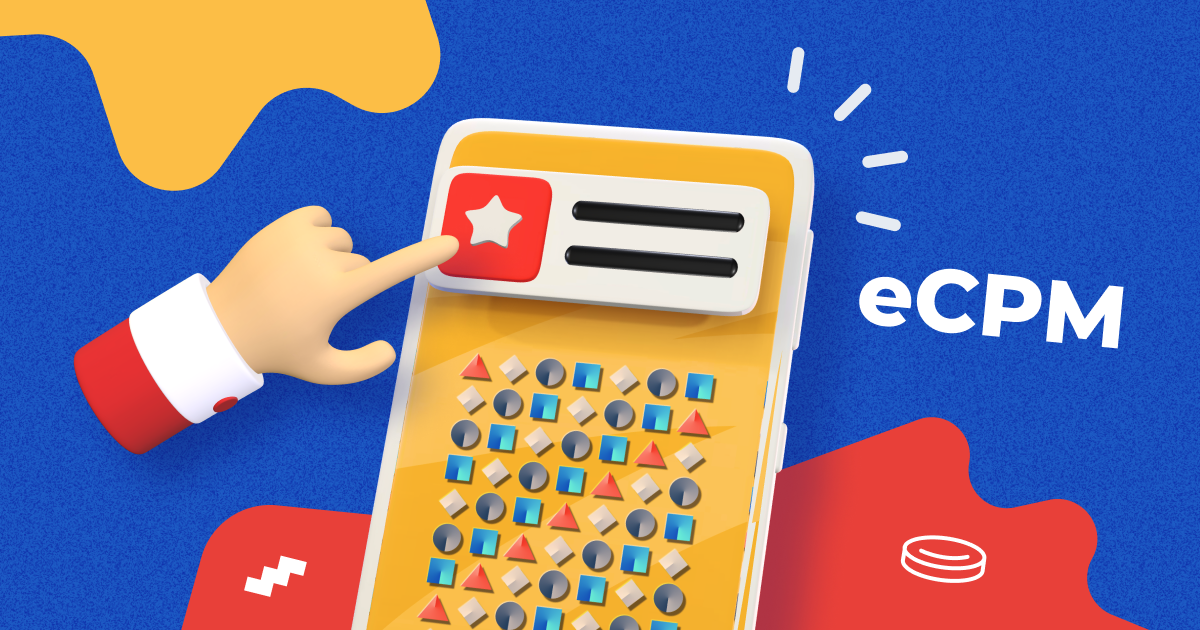One of the central metrics for evaluating the effectiveness of advertising is eCPM. What is its difference from CPM, how it is calculated and why it cannot be unconditionally relied on, — he told in his column for App2Top.ru Mark Rodriguez, Product Marketing and Growth Manager at Appodeal.
We are returning to the expansion of the “Dictionary of Game Developers“. This time with the support of Appodeal.
Mark RodriguezA little bit about the terms
Before we move on to eCPM, it is important to focus on two terms, which we will also often use in the text below:
- publisher — the owner of the application in which the ad is shown;
- the advertiser is the one who ordered the promotion of his application.
What is eCPM?
The eCPM metric stands for effective cost per mille (the effective cost of one thousand impressions).
It shows the revenue received by the publisher from thousands of advertising impressions in his application.
Why should it not be confused with CPM?
eCPM and CPM metrics seem close, but it is important not to confuse them. They are used for different purposes by different companies.
CPM stands for cost per mille (the cost of one thousand impressions).
It does not show revenue, but the cost for which an advertiser can purchase a thousand impressions as part of a particular advertising campaign.
Why don’t publishers use CPM?
It is quite logical to ask the question: why can’t publishers use CPM? If one party is willing to pay a certain amount for advertising, then why can’t it equal the amount received by the other party?
Everything is complicated for several reasons.
Firstly, the publisher and advertiser need an intermediary who helps the first to sell advertising space, and the second — to find platforms for promotion. It is clear that these services also cost money.
Secondly, advertisers are not always ready to pay for impressions. Today, it is often customary to pay for achieving other goals (for transitions, for installations, for progress, if we are talking about a game, and so on).
Thirdly, the cost of advertising inventory (that is, advertising positions in the publisher’s application) is determined by supply and demand at each individual time (that is, calculated dynamically).
So it turns out that the cost of each viewing after the fact depends on many factors. A static CPM set initially by one of the advertisers cannot correctly reflect the final price for the publisher.
The advantage of eCPM is that it solves the problem. It shows the amount paid for the advertising inventory, without reference to what exactly the advertiser paid for.
How is eCPM calculated?
The formula looks like this:
(total earnings / total number of ad views) x 1000 = eCPM
For example, if the earnings of a particular mobile application is $250 per day, and the number of daily views is 100 thousand per day, then eCPM will be calculated as follows:
(250 / 100000) x 1000 = $2,5 eCPM.
In other words, for every 1000 views, the publisher receives $2.5.
Important: eCPM allows you to calculate not only total revenue, but also revenue for each inventory cell. This can be useful for analyzing the most effective advertising format. For example, if the game has both a full-screen banner and a motivated video, you can compare their effectiveness with each other, find out which of the formats brings more money.
What does the high eCPM mean?
The higher the conversion rate from viewing ads to installation, the tougher the competition for advertising in a particular application and the more its developers earn (that is, the higher the eCPM).
Therefore, a high eCPM is evidence that advertising in the application works well and converts users.
However, it is not worth saying that eCPM is an indicator of the effectiveness of advertising monetization. Because there are nuances.
One of these nuances is the fill rate indicator. We will talk about it separately in another article, but for now we note that it shows how many impressions requested by the application were actually shown to users.
With a high eCPM and a low fill rate, you can be left with nothing after an advertising campaign.
Why else use eCPM?
In addition to analyzing the conducted campaigns, eCPM uses:
- to set realistic campaign optimization tasks;
- to assess the value of the bid at which the publisher is ready to provide a place in the inventory;
- as a reference for testing ads;
- when forecasting future revenue.
Pitfalls of eCPM
The main problem with eCPM is that it is impossible to understand out of context whether the metric value is of great importance in this situation.
For example, you can have two types of creatives in your game: rewarded ads and a banner at the bottom of the screen.
Formally, the eCPM of rewarded advertising is much higher than that of a banner. However, with a detailed assessment, it may turn out that it is the latter that brings the main revenue to the game.
Why? Banners have a high number of requests from advertisers. Plus, within one inventory cell, you can show several similar creatives at once, one after the other.
Or another example. Let’s say you have two advertising networks: TomsNetwork with eCPM at $5 and JerrysAds with eCPM at $2. It would seem that it might be worth refusing to work with JerrysAds. However, first you should analyze the situation.
As a result of the assessment, it turns out that TomsNetwork brought in $ 5 in total for the week, and JerrysAds — $ 20 thousand. The first ad was played only 1000 times, and the second — 10 thousand times.
That is, eCPM says nothing about exactly how much money you earn.
So it turns out that eCPM is one of the metrics that allows you to conveniently and quickly evaluate the effectiveness of both a separate advertising network and advertising monetization as a whole, but still cannot be a universal measure.
So when analyzing advertising monetization, in addition to eCPM, it is important to take into account other metrics. For example, the already mentioned fill rate, as well as the average income per active user per day (ARPDAU), but more on that next time.



